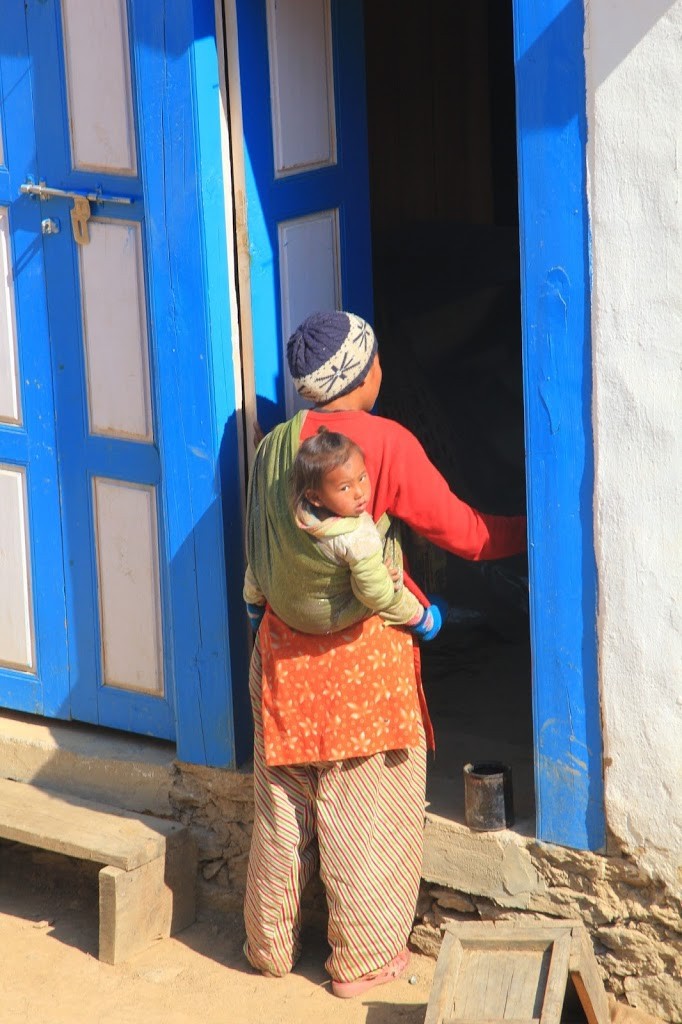Active Mind, Creative Spirit
Magic Cloth
Traveling to Nepal shows me, in stark contrast, all the quirky things we do in our culture. I love how the contrast and realization cracks open my thoughts and breaks me out of my routine, rote way of life. We have everything here, yet we need more. It’s the nature of our culture – creative, productive, consumerist. Not necessarily in that order.
If you’ve ever had a baby, you are aware of all the “stuff” you “need” in order to function in our society: a bassinet, a crib, a stroller, a car seat, a changing table, a wearable carrier and perhaps a baby backpack. You may need 3 car seats to get you through the first 2 years of your child’s life – for each car. You’ll need another until age 9 or so. And that just covers “places to put your baby,” not even anything he needs.The sheer volume of products our society has designed in order to make your life with a baby comfortable is pretty overwhelming. So when I tell you that most other cultures replace all those things above with one magic piece of cloth, you probably shake your head.
A couple years ago, a small American organization decided to collect up a bunch of used baby carriers and take them over to Greece to give the Syrian refugees a way to carry their children, giving them an extra hand, so they could take more of their possessions with them. It’s a noble idea and I even had a friend go along to facilitate the process. She was in charge of teaching women how to use the specific carrier they received. There are lots of different kinds, from stretchy Mobi wraps to fully supported baby backpacks, there are foam-filled straps for adjusting, a plastic top cover for the sun, metal loops, waist straps and connectors. A myriad of solutions for carrying a child. But the thing that I wondered was, isn’t there a simpler solution? Is that really what they need?
One of my Sherpa friend’s sisters-in-law wrote a book called I Taste Fire, Earth, Rain. It’s a lovely, feminine look at what it feels like to be assimilated into the Sherpa culture. She’s an American and married a Sherpa and the book details her every thought while going through the process. Throughout the book I connected with her descriptions of the cultural things she ran across. Here is an excerpt that illustrates that perfectly, and also my point above:
From the edge of our mountain side terrace, I look down on the farm house and watch a woman work with the length of cloth. On her back, she carries an infant in a cloth slung over her shoulder; she squats to pick up vegetables that disappear into folds of fabric that cradle her child. I wish her a crib. The young woman reappears on the roof without the child; she gathers ears of corn from under the eaves and places them into the cloth that hangs as a bag. I wish her a basket. After a time, she spreads out the cloth in the farmyard; she stone-grinds the corn and gathers up her flour with the cloth. I wish her a funnel. She gives the cloth a shake; she wraps it around her hips and inserts her knife. I wish her a scabbard. The young woman disappears into the forest; she returns with a bundle of water and the cloth protecting her back I wish her a basket. She unpacks her bundle; she wipes her forehead with the cloth and and twines it turban-like around her head. I wish her a hat. She disappears below the terrace with the plastic jug; she reappears with the water jug balanced on the folded cloth on her head and swings her arms to her song. I wish for a magic cloth.
The activities in the imagery of this paragraph are common everywhere in rural Nepal. I’ve stopped to watch women do exactly these things many times. If nothing else, it’s a reminder that necessity and ingenuity go hand in hand. And maybe also, that when you aren’t burdened with necessity, you end up with a lot of unnecessary stuff.
I like reminders like that.

